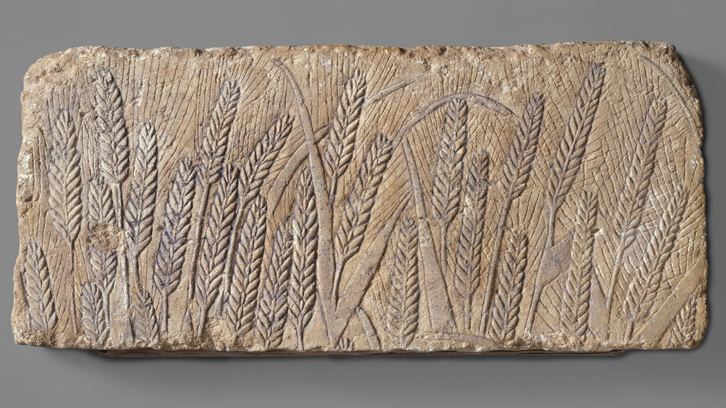The genome of a 3,000-year-old ancestral wheat

When we buy bread we cannot imagine the whole story behind the wheat we are currently consuming. Recent findings from the Centre for Research in Agricultural Genomics (CRAG) researcher Laura R. Botigué, in collaboration with researchers from University College London (UCL) and the Petrie Museum of Egyptian Archeology, have provided valuable insights into this cereal biology and its domestication history.
This is a pioneering study in which the genome of a 3,000-year-old emmer wheat has been sequenced for the first time. This specimen, found in an archaeological excavation in Egypt in 1924, had been on display for almost a century in a museum without any climate control. The study demonstrates the great information potential contained in museum collections, which surely hold many treasures to re-discover.
Wheat Domestication
The wheat sequenced by the international team is very similar to the current consumed emmer wheat (Triticum turgidum subsp. Dicoccon). It was one of the firsts wheats to be domesticated (cultivated) and the most popular cereal in ancient Egypt. When the Romans invaded Egypt they adopted the use of this cereal, which they called “Pharaoh’s wheat” (“farro” in Italy). Most wheat grown today is bread wheat (Triticum aestivum), which is the result of a hybridisation between emmer wheat and a wild grass.
Previous studies have estimated that humans began to domesticate the emmer wheat more than 8,000 years ago. One of the most important characteristics that domesticated cereals and legumes share (and emmer wheat is no exception) is the loss of the natural mechanism of seed dispersal. Wild plants scatter seeds, so that they can propagate. Domesticated cereals, on the other hand, retain the seed in the spike, which allows to harvest them without losing the grain. As expected, DNA extracted from the 3,000-year-old wheat shows clear signs of domestication, including the non-shattering phenotype.
The research carried out by Laura R. Botigué and colleagues has opened new questions on the history of emmer wheat domestication and dispersal. It was thought that during the Neolithic period this crop was extended in parallel along the two coasts of the Mediterranean. Instead, the current study suggests that the dispersion occurred in different waves, a first one along the northern coast of the Mediterranean and Europe, and a second one to Africa and Asia.
Applications in modern wheat
The sequencing of this ancestral wheat variety revealed very useful characteristics that were lost during the domestication process. Pharaoh's wheat was considerably more resistant to disease pests and was capable of growing in impoverished soils and with scarce water.
According to the CRAG researcher involved in this work, "characterizing the genomes of old samples will allow us to discover genetic diversity that has been lost in the current varieties, and recover genes that may have a high agronomic interest in the current climate crisis context". Thus, the study of ancestral species will undoubtedly provide key tools for the plant breeding sector.
Centre for Research in Agricultural Genomics (CRAG)
References
Michael F Scott, Laura R Botigué, Selina Brace, Chris Stevens, Victoria E Mullin, Alice Stevenson, Mark G Thomas, Dorian Q Fuller, Richard Mott. A 3,000-year-old Egyptian emmer wheat genome reveals dispersal and domestication history. Nature Plants, 4th of November, 2019. DOI: 10.1038/s41477-019-0534-5.


